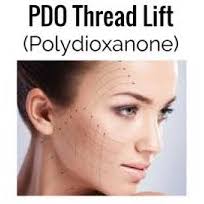The search for non-surgical or minimally invasive techniques for facial rejuvenation has been ongoing for decades. Some patients understandably want to avoid facelift surgery for reasons of recovery, cost and the invasive nature of the surgery. The use of the Threadlift procedure using barbed sutures to lift up sagging cheeks and jowls as a far less invasive facial rejuvenation procedure was introduced over fifteen years ago. The procedure had a lot of initial enthusiasm but waned after a few years of clinical results that showed lack of sustained results and thread-related issues.
While the initial Threadlift barbed sutures were eventually removed from clinical use, the promise of the procedure led to further innovations in the barbed suture material and techniques. It is a concept that remains appealing and, as a result, numerous manufacturers have developed newer types of barbed sutures for the same basic concept of suture facelifting.

Complications were not uncommon and occurred in one-third of the patients. (34%) Technical placement issues occurred in 11% of the patients with a too superficial thread position. Pertinent medical issues were persistent redness (9%), infection (6%), skin dimpling (6%) and temporary facial stiffness. (1%)
This study showed that, while the aesthetic effects of barbed threads showed an immediate improvement in age-related facial sagging, those effects were short-lived. In addition considering that the rate of complications was not insignificant, the use of PDO threads in facial rejuvenation is recommended for patients who can not undergo more traditional forms of facelift surgery.
The experience with more recent PDO threads is very similar to what was experienced with the original barbed suture thread lifts. There is really not a lot of difference in the clinical outcomes nor should it be expected to be. Pulling up sagging facial tissues with resorbable sutures should not be expected to have a sustained result as no tissues are removed or tightened. And like all implanted devices that are placed in the superficial subcutaneous tissues, the type of complications seen would be expected.
But that being said there still is a role for suture facelifting procedures in the properly selected patient. The best innovation with the use of PDO threads is that they are reservable so the risk of foreign-body reactions is eliminated after their facial lifting benefits have disappeared.
Dr. Barry Eppley
Indianapolis, Indiana


